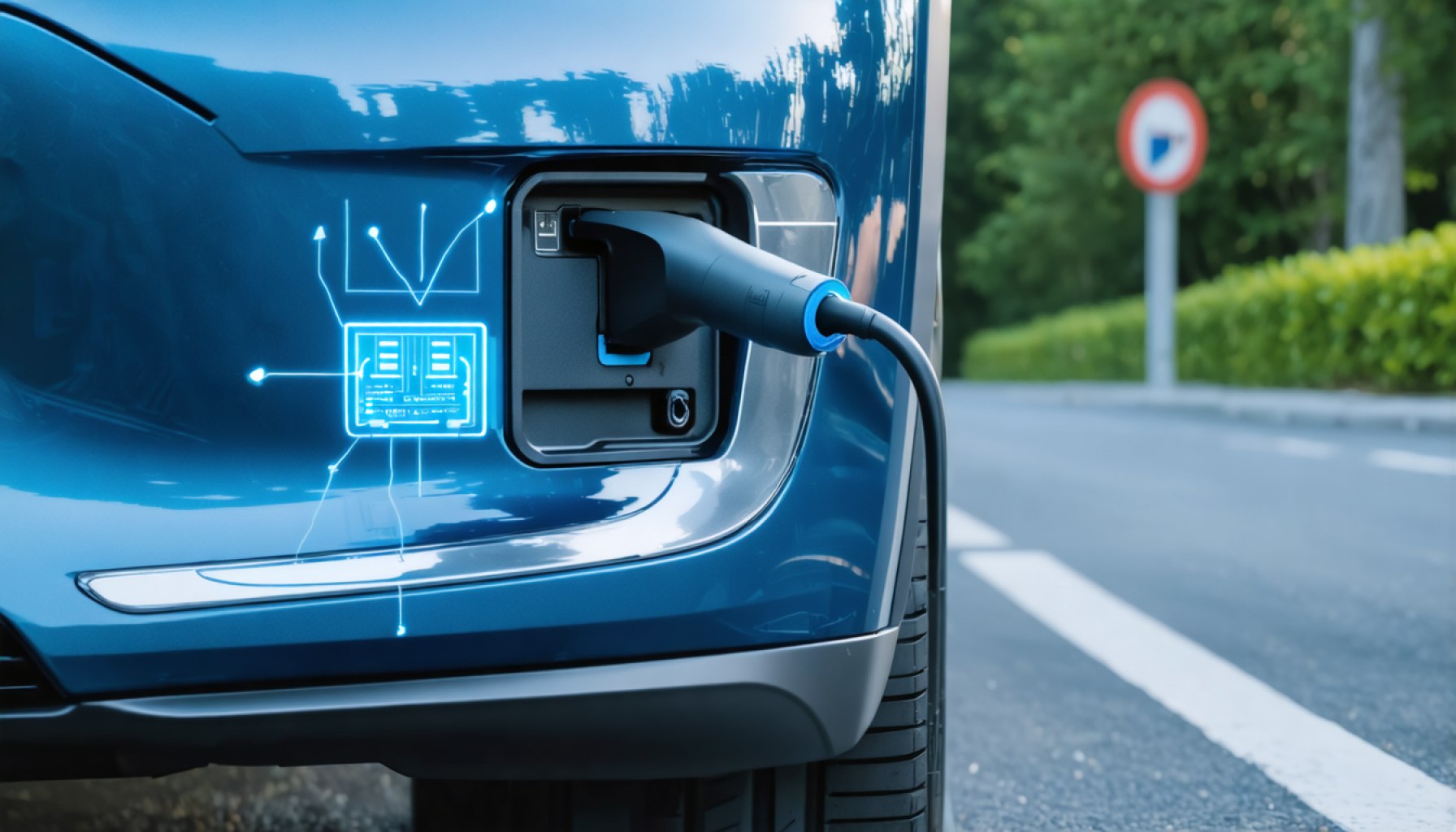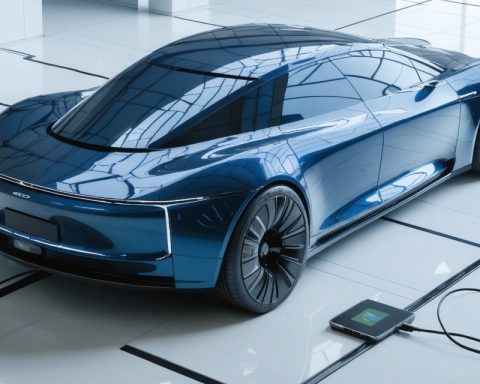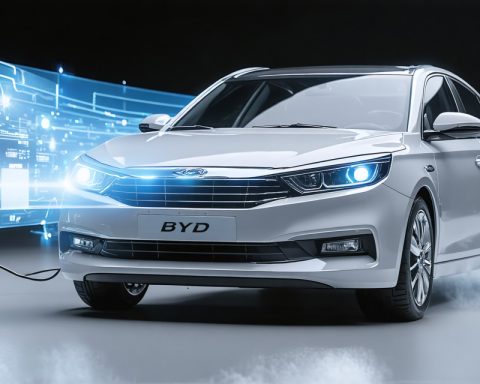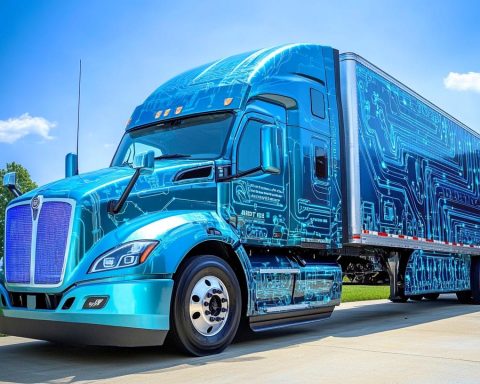- Electric vehicles (EVs) require advanced components to handle high-voltage demands of 300-400 volts DC.
- FCL Components Corporation from Tokyo has developed innovative relays: FTR-B3, FTR-B4, and FTR-C1, designed to meet the high-voltage needs of EVs.
- The new relays operate within a 1mA 400VDC range, ensuring robust performance for various automotive applications.
- These relays enhance safety by detecting overvoltages, overcurrents, and insulation failures, benefitting both EVs and traditional vehicles.
- FCL’s relays are produced following the IATF 16949 standard and comply with European RoHS and ELV directives, emphasizing quality and environmental responsibility.
- FCL continues to innovate, focusing on vehicle safety and performance in an evolving transportation landscape.
The hum of an electric vehicle (EV) is increasingly becoming the soundtrack of modern streets. With this quiet revolution comes the urgent demand for components that can withstand the high-voltage reality of EVs. Addressing these advanced needs, FCL Components Corporation, a pioneer basking in the busy heart of Tokyo, has unveiled a series of cutting-edge relays specifically engineered for the rigorous demands of automotive signal switching.
Typically, EVs depend on standard signal relays. However, the high voltage of their batteries, usually hovering between 300 to 400 volts DC, stretches the capabilities of conventional relays beyond their intended limits. This often leads to performance discrepancies, prompting manufacturers to seek more robust solutions.
FCL Components, understanding the pivotal need for reliability, has revolutionized their relay technology. Their latest offerings—comprising the compact FTR-B3, the slender FTR-B4, and the fortified FTR-C1—are built to confidently handle the high-voltage switches at an operating range of 1mA 400VDC with a maximum power capacity of 0.4W. These relays are not mere technological upgrades, but are guardians of safety in the electrically charged world of modern automotive engineering.
These relays excel in applications ranging from emergency call systems and in-car audio circuits to battery monitoring and voltage anomaly detection. Whether spotting overvoltages, overcurrents, or detecting insulation failures, these components serve as the backbone of vehicular electronic systems. Importantly, they’re not restricted to just EVs—traditional gasoline and hybrid vehicles, too, can benefit from these advanced solutions.
Manufactured in compliance with the automotive quality management standard IATF 16949, the relays enthusiastically meet European RoHS and ELV directives, reflecting FCL Components’ unwavering commitment to environmental and quality standards.
The adventure of progress is never truly settled. For FCL Components, the journey of evolving vehicle safety and performance is ongoing. Their commitment to innovation stands as a promise: to continue pushing the limits of high-reliability, high-performance relays that secure the path forward in automotive technology.
This release marks a milestone not just for FCL Components, but for the future of transportation technology in a world awakening to the needs of a sustainable and energy-conscious era.
Why FCL Components’ Advanced Relays are Transforming the Automotive Industry
Introduction
The quiet hum of electric vehicles (EVs) has become an emblem of the modern urban environment. Powered by the evolution of high-voltage technology, EVs face unique challenges that necessitate innovative solutions. FCL Components Corporation, based in Tokyo, has stepped up to the plate with their revolutionary relays designed to meet the rigorous demands of EVs and beyond. This article delves into the significance of these relays, explores additional facts, and provides actionable insights for industry professionals and enthusiasts alike.
Understanding the Need for Advanced Relays in EVs
Key Specifications and Features
1. High-Voltage Handling: FCL’s relays, such as the FTR-B3, FTR-B4, and FTR-C1, are engineered to operate efficiently at voltages up to 400V DC, addressing the challenge of high-voltage batteries in EVs.
2. Power Capacity: A maximum power capacity of 0.4W ensures these relays can handle intense conditions without overheating or failing.
3. Range of Applications: From emergency call systems to voltage anomaly detection, these relays are versatile, serving critical functions across various vehicular systems.
Real-World Use Cases
– Battery Monitoring: In EVs, maintaining optimal battery health is crucial. FCL’s relays play a pivotal role in battery management systems, ensuring stability and safety.
– Hybrid and Gasoline Vehicles: While primarily designed for EVs, these relays are applicable in traditional vehicles, enhancing their electrical systems.
Market Trends & Future Projections
– Rising demand for EV infrastructure will likely surge the requirement for durable, high-voltage components like those from FCL Components.
– According to market analysts, the automotive relay market is expected to grow significantly, driven by advances in EV technology.
Compliance and Environmental Considerations
FCL Components’ relays are manufactured under stringent industry standards:
– IATF 16949 Compliance: Ensures quality in automotive production.
– RoHS and ELV Directives: Reflect the company’s commitment to minimizing environmental impact by restricting hazardous substances.
How to Implement FCL Relays in Automotive Systems
Step-by-Step Guide:
1. Assess Electrical Needs: Determine the specific requirements of your vehicle’s electrical system.
2. Select Suitable Relay: Choose from FCL’s lineup based on your voltage and power capacity needs.
3. Integrate with Existing Systems: Ensure seamless compatibility with current automotive components.
4. Conduct Rigorous Testing: Validate the performance and reliability under real-world conditions.
Pros and Cons Overview
Pros:
– High reliability and safety in high-voltage applications.
– Versatility across various vehicle types.
– Compliance with global quality and environmental standards.
Cons:
– Higher initial cost compared to traditional relays.
– Complexity in compatibility with legacy systems in older vehicles.
Security and Sustainability
FCL Components’ commitment to security and sustainability is evident in their innovative design and manufacturing practices. By adhering to top-tier quality standards, they ensure that their products not only perform optimally but are also environmentally responsible.
Actionable Recommendations
– Automotive Manufacturers should explore partnerships with companies like FCL Components to advance their EV offerings.
– Vehicle Owners can benefit from retrofitting their vehicles with high-performance relays to enhance safety and efficiency.
Conclusion
As the automotive industry continues to pivot towards sustainable technology, components like FCL’s advanced relays play a critical role in driving this transformation. Whether for enhancing vehicle safety or adapting to high-voltage demands, these cutting-edge solutions highlight a pathway to a more reliable and energy-efficient future.
For more information about innovative automotive solutions, visit FCL Components.












